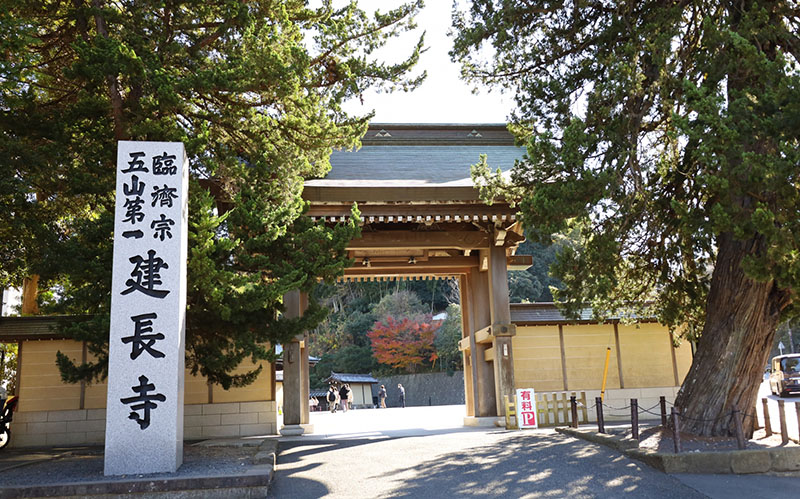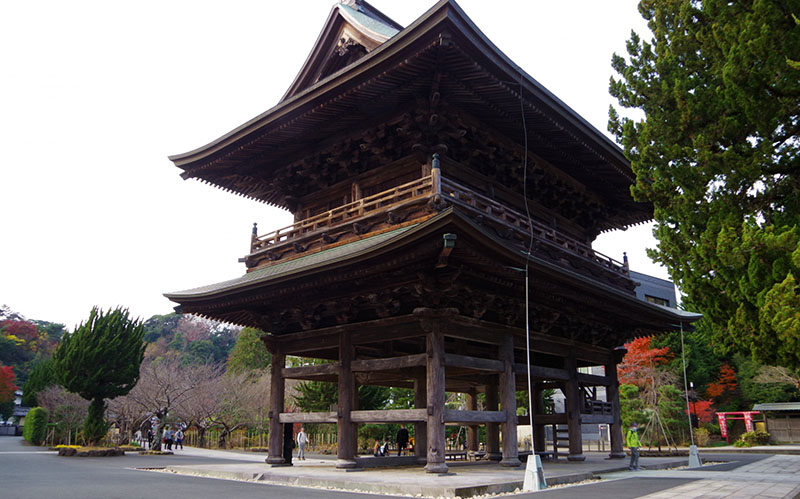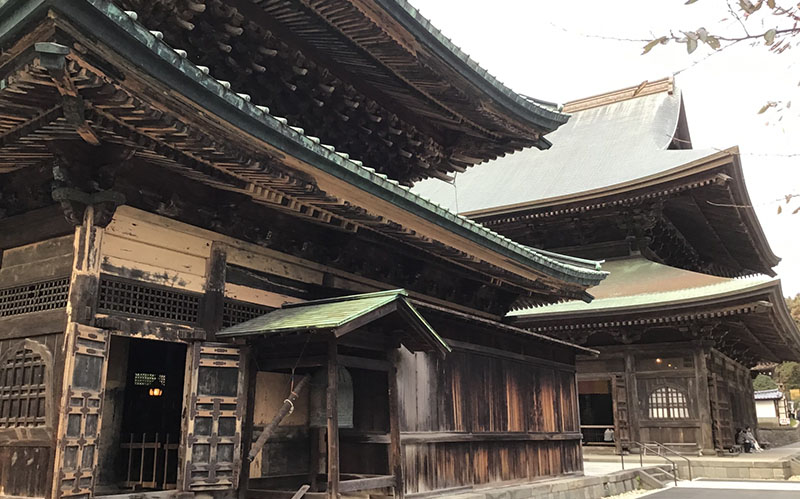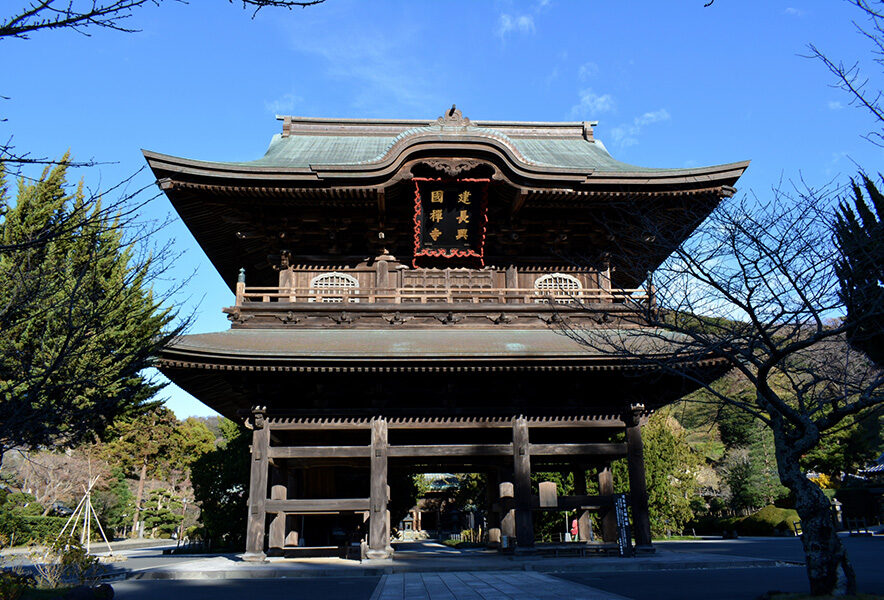The oldest Zen temple
Kenchoji Temple is the head temple of the Kenchoji School of Rinzai Zen Buddhism, located in Sannouchi, Kamakura City, Kanagawa Prefecture.
The temple was founded in 1253 by the fifth regent of the Kamakura Shogunate, Hojo Tokiyori (whose son was the eighth regent Hojo Tokimune, famous for the time of the Genko invasion), and its founder (first chief priest) was Lankei Doryu, a priest from the Southern Song Dynasty.
The temple is said to be the second oldest Zen temple after Seifukuji Temple (Fukuoka City) and others, partly because its founder, Doryu Lankei, was a pure Zen Buddhist monk.
There were Zen temples before Kencho-ji, but they were a mixture of other sects (such as esoteric Buddhism).
It is said that Chinese, not Japanese, was spoken in the temple precincts because many monks from China came to Japan when the temple was first built.
Many of the successive chief priests have also come from China.

Kenchoji Temple, one of the five temples of Kamakura
The Gozan system is a system of temple ranking in the Rinzai sect of Zen Buddhism, and Kenchoji Temple is included in the top-ranking “Gozan” (*currently the Gozan of Kamakura).
Under the “Gozan” system, temples were divided into “Jisetsu,” “Shozan,” and “Rinshita,” to control the chaos of the Zen monasteries.
The origin of the Gozan system is said to be that the fourth emperor of the Southern Song dynasty (China), Ningzong, protected five Zen temples as “Gozan,” following a legend from India.
The Gozan in Japan is said to have originated in the late Kamakura period (1192-1333), when Zen Buddhism became widespread, and the ninth regent Hojo Sadatoki ordered Jochi-ji Temple (Kamakura City) to be designated as one of the Gozan.
Although the details of the Gozan in the Kamakura period are not known, it is believed that Kenchoji Temple was also included.
In the Muromachi period (1333-1573), the Ashikaga shoguns decided on the Gozan, and five temples from Kamakura and Kyoto, including Kenchoji Temple, were selected as Gozan by Ashikaga Yoshinori, the second shogun.
During the reign of Ashikaga Yoshimitsu, the third shogun, the Gozan system was drastically reformed, and the Gozan were divided into the “Kamakura Gozan” and the “Kyoto Gozan,” and the “Gozan-nojo” (Nanzenji Temple) was created above the Gozan.
At this time, Kenchoji Temple became one of the “Kamakura Gozan” and ranked first among them.

The layout of the Kencho-ji Temple complex is an important cultural property in a straight line.
When visiting a temple, many people are not sure which denomination it belongs to.
One of the tricks to distinguish the sect of a temple is the layout of the temple complex (buildings).
The layout of Zen temples such as Kencho-ji Temple is particularly clear: the main buildings are arranged in an almost straight line from south to north, although the layout of the temple buildings is somewhat different from that of when it was first built.
It is said that this is modeled after the Wan Shou Zen Temple in Hangzhou, Zhejiang Province, which is also the first of the Five Mountain Temples in China.
The main buildings of Kencho-ji Temple are the San-mon Gate, the Butsuden (Buddhist Hall), the Hodo (Hall of the Law), and the Hojo (the chief building), and these buildings are designated as National Important Cultural Properties of Japan.


Access to Kenchoji Temple
8, Yamanouchi, Kamakura, Kanagawa 247-8525, Japan
Parking around Kenchoji Temple
Kenchoji Temple Official Website
Official Site:https://www.kenchoji.com/
